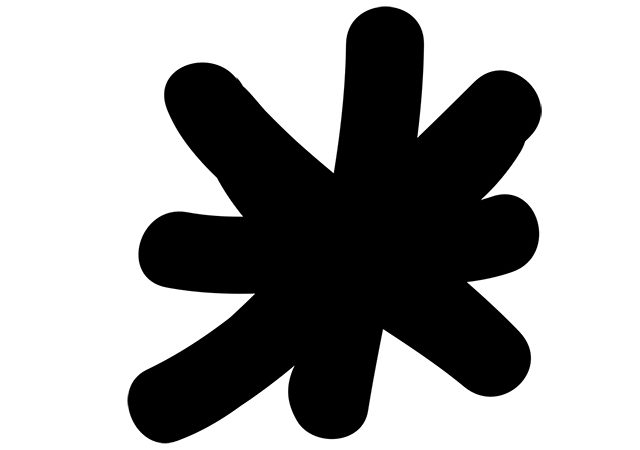If function y=f(x) has a derivative in the point x:
Let’s introduce the function:
Function α(x) exists with the ∆x≠0, and α(x) – infintesimal when .
∆y=f’ (x)*∆x+α(∆x)*∆x, ∆x≠0
Let’s define α(Δx)= 0 when Δx□(=) 0. It means α(∆x) is a continuous function. f’ (x) does not depend on the ∆x, so we can mark it as A when . Then an increment of a function y=f(x) in the point x looks the following:
,
where A – constant, .
We will show that y=f(x) has a derivative in point x, and f’ (x)=A.
The existing function derivative f’ (x) in point x and the function increment representation in the form ∆y=A*∆x+α(∆x)*∆x are equivalent features of the function y=f(x).
The increment y=f(x) can be presented as ∆y=A*∆x+α(∆x)*∆x, where A – constant, α(x) – is an infinitesimally small function when .
It means in order for y=f(x) to be differentiable in the point x, it is necessary and sufficient that f(x) has a derivative in this point.
Operation of the derivative calculation calls for a differentiation of a function.
Condition of differentiability ∆y=A*∆x+α(∆x)*∆x with allowance for the equalities A=f’ (x), α(x)*∆x=o(∆x), when can be expressed in the following form:
∆y=f’ (x)*∆x+o(∆x)
Theory
If y=f(x) is differentiable in the point a, then it is continuous in this point.
Proof
The statement we must prove is .
Let’s introduce: x-a=∆x, then , when .
And we have to prove that
As the function y=f(x), is differentiable in the point a, then ∆y=f’ (a)*∆x+o(∆x),
Then , ∆y=f’ (a)*∆x+o(∆x)- residual form of the continuity condition y=f(x) in the point a.
Function differential
Differentiability condition has the following form:
∆y=f’ (x)*∆x+o(∆x)
Both terms are infinitesimally small functions when .
Differential of a function y=f(x) in point x, is a linear function of the argument ∆x:
dy=f’ (x)*∆x
Differential of the independent variable x, is a variable increment:
dx=∆x
then dy=f’ (x)dx, and .
If x is an independent variable, then the derivative of a function in the point x is the ratio of the function differential to variable differential.
Physical meaning of the function differential
If t- time, y=f(t) the coordinate of a point on the 0Y axis. Then ∆y=f(t+∆t)-f(t) – the coordinate increment during the time from moment t till the moment t+∆t.
And dy=f’ (t)*dt=v(t)*dt.
It means that the differential is equal to the coordinate difference, if its velocity v(t) was constant during the time range (t+∆t,), and equal to f’ (t).
Differential dy is equal to the change of function y=f(t), with the argument change ∆t, the function could have if it is linear on the line segment [t,t+∆t] with slope value f’ (t).
Differential for approximate calculations
The formula ∆y=dy+o(x) is useful for approximate calculations of f(x+∆x), where ∆x is small, and f(x) and f’ (x) .
f(x+∆x)-f(x)=f’ (x)*∆x+o(x)
f(x+∆x)=f(x)+f’ (x)*∆x+o(x),
Hence, f(x+∆x) ≈ f(x)+f’ (x)*∆x.
Differentiation rules
Theory
If functions u(x) and v(x), are differentiable in the point x, then functions u(x)±v(x),u(x)*v(x) and u(x)/v(x) are differentiable too (v(x)≠0) in the point x, and:
.
Proof
Assume y=u(x)*v(x).
∆y=y(x+∆x)-y(x)=u(x+∆x)*v(x+∆x)-u(x)*v(x)
=u(x+∆x)*v(x+∆x)-u(x)*v(x)+u(x)*v(x+∆x)
-u(x)*v(x+∆x)
=(u(x+∆x)-u(x))*v(x+∆x)+u(x)*(v(x+∆x)-v(x))
=∆u*v(x+∆x)+u(x)*∆v(x);
Hence, , and if , then
It means y’ (x) = (u(x)*v(x))’= u’ (x)*v(x)+v’ (x)*u(x).
Corollaries
Derivative of the inverse function
Theory 1. If function is defined as monotonous and continuous in point x0, differentiable in the point x0, and . Assume . Then in point y0 the reversed function exists, and this function is differentiable in y0 and,
.
Derivative of complex function
Let’s take the complex function y=f(t), where t=φ(x), so y=f(φ(x))=F(x).
Theory 5
If function t=φ(x) is differentiable in the point , function y=f(t) is differentiable in the point t0 then the complex function F(x)=f(φ(x)) is differentiable in point x0 and the following is correct:
Anti-derivative and indefinite integral
Anti-derivative is a term that goes from the following physical problem. Assume that x is a time, y=f(x) and a coordinate is a point moving on the 0Y axis at the moment x. f’ (x)= v(x) velocity of a point at the moment x. If the time dependence of the coordinate is known, so to find velocity v(x) we have to make an operation of differentiation.
In the inverse problem, if we know velocity-time dependence v(x), and we’ve got to find the coordinate-time dependence, f(x) function, where v(x)=f’ (x), we’ve got to make operation inverse to derivation.
Assume that y=f(x) belongs to unity X.
F(x) function is anti-derivative to the function f(x) in the unity X, where x∈X and F’ (x)=f(x).
In accordance to this, function f(x) is anti-derivative for velocity v(x).
For example, F(x)=lnx, is an anti-derivative for .
Theory 1. (main theory of integral calculus)
If F1(x) and F2(x) are any anti-derivatives for function in the unity X, then F1(x) – F2(x) = C = const, in Unity X.
If F(x)- one of the derivatives for f(x) in the unity X, then any derivative Φ(x) for f(x) in this unity has the form
Φ(x)=Ϝ(x)+C, where C is a constant.
The collection of all anti-derivatives for function f(x) in the unity X is called the independent integral of f(x) in this unity and has this form: ∫f(x)dx.
Here f(x)dx is integral. f(x)dx is a differential of any anti-derivative F(x) for f(x):
dF(x)=F’ (x)dx=f(x)dx
Operation of independent integral calculation is called integration operation.
where F(x) – one of the anti-derivatives for f(x), C is a constant parameter.
Main features of the independent integrals.
Two integration methods exist for most usable for all types of integral:
• variable replacement;
• partial integration.



